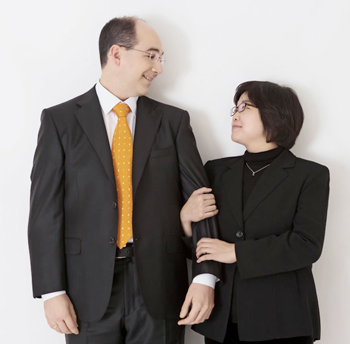by Jarrett Hoffman

He and pianist Jee-Won Oh will take the stage of Ludwig Recital Hall at Kent State on Tuesday, July 3 at 7:30 pm for a program that’s especially intriguing for its ending: the cellist’s arrangement of J.S. Bach’s Violin Partita No. 2 in d.
“It’s part of a project I launched in the spring here in Cleveland called ‘Bach for Humanity,’” Kosower said. “Basically what I’m doing over three years is bringing all of the cello suites and the violin sonatas and partitas to a cross-section of the community through educational performances, outreach, and performances in concert halls and perhaps some unconventional venues.”
Kosower’s exploration of Bach’s violin music began about twelve years ago, when he was living in Germany. “At first it was just kind of a novelty to see what could be done on cello. But I quickly realized that this music was very different from the cello suites and provided a totally different angle on Bach’s music. I felt motivated and inspired to play it on the cello because this music really resonated with me — as well as the cello suites of course, which are very endearing to every cellist.”
Everybody knows Bach, Kosower said, but has everybody heard Bach? “Not so much, actually — surprisingly. I think his music really brings people together, and maybe that’s something that’s needed in our society right now.”
The Chaconne that ends the Second Partita brings closure to the program in more ways than one. “It’s remembering the death of Bach’s first wife, and represents the circle of life,” Kosower said. It’s an interesting terminus for an evening that begins with Papageno’s lighthearted yearning for female companionship in Beethoven’s 12 Variations in F on “Ein Mädchen oder Weibchen” from The Magic Flute.
“Typical of Mozart, it’s kind of a ridiculous story with more profound undercurrents,” Kosower said. “Beethoven is the king of variations, and it’s such an ingenious set,” a journey in itself “through all different ways of treating a very straightforward and simple theme.”
In between innocence and remembrance will come beauty and struggle in cello sonatas by Frank Bridge and Samuel Barber.
“Both are substantial sonatas with quite a few things in common,” Kosower said. One link comes through Felix Salmond, who premiered the Bridge and was among the first to play the Barber. “He was one of the most influential teachers of cello in the early 20th century in America. Basically he taught anybody who was anybody.”
Another figure looming over the two sonatas: Brahms. “They’re both composed on thematic- and harmonic-conceived structures,” Kosower said. “I always refer to Barber a little bit as the American Brahms. It’s clearly his own voice, and there’s American naiveté going on there, but he’s strongly influenced by Brahms. Both pieces are also very melodic and have the undertones of turmoil and despair and longing. They’re a pair in many senses.”
But they’re also the products of two composers from opposite sides of the Atlantic and at opposite stages of their careers. “I look at the Bridge as English impressionism,” Kosower said. “It reminds me of his French counterparts, but in an English way. This was near the end of his compositional output, so he was experimenting with 20th-century influences such as the elasticity that you might find in Rachmaninoff’s music. Barber’s sonata was a very early work for him, and a little more Classical in the way it unfolds.”
Taking a bird’s-eye view of the evening, Kosower suggested that the joyful quality of Papageno’s aria, where he hopes to find “a girl or a little wife,” might be needed in order to get through the darker remainder of the program. “Come to the concert with a companion, maybe, because there’s a lot of drama. It should be a fun journey.”
Published on ClevelandClassical.com June 27, 2018.
Click here for a printable copy of this article


